
Futur mit «ir a + Infinitiv» im Spanischen
You can explain what will happen in the near future with the construction ir a + infinitive, the Spanish equivalent of "to be going to do." To use el futuro próximo, conjugate ir in the present tense according to the subject, then follow it with a and the infinitive of the action verb. Por ejemplo…. El avión va a aterrizar en dos minutos.

IR A INFINITIVE OR IR AL / A LA PLACE YouTube
Using Ir + A + Infinitive. The near future uses the Spanish ir form which means "to go." This verb has many uses depending on the context of the sentence, a few examples include: This verb should.
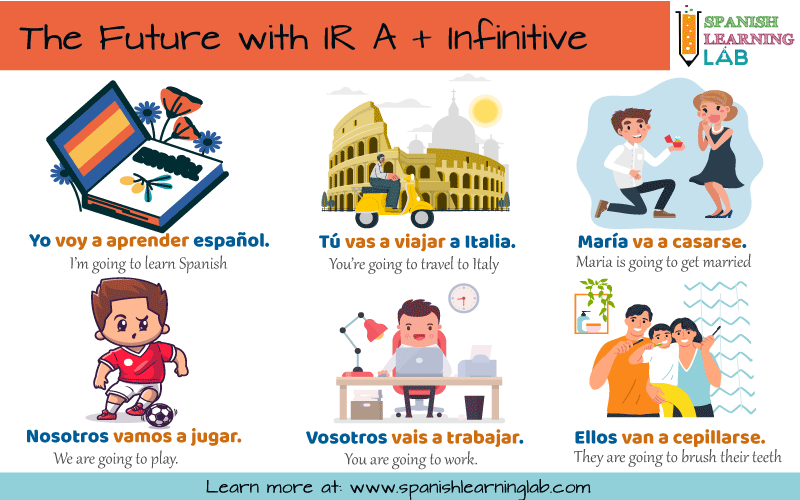
Intermediate Grammar Archives Spanish Learning Lab
Learn how to conjugate in El Futuro Próximo in Spanish. ir ( El Presente) + a + infinitive. Look at these sentences: Yo voy a coger el tren en una hora. I am going to catch the train in an hour. Tú vas a ir de vacaciones el viernes. You are going to go on holiday on Friday.
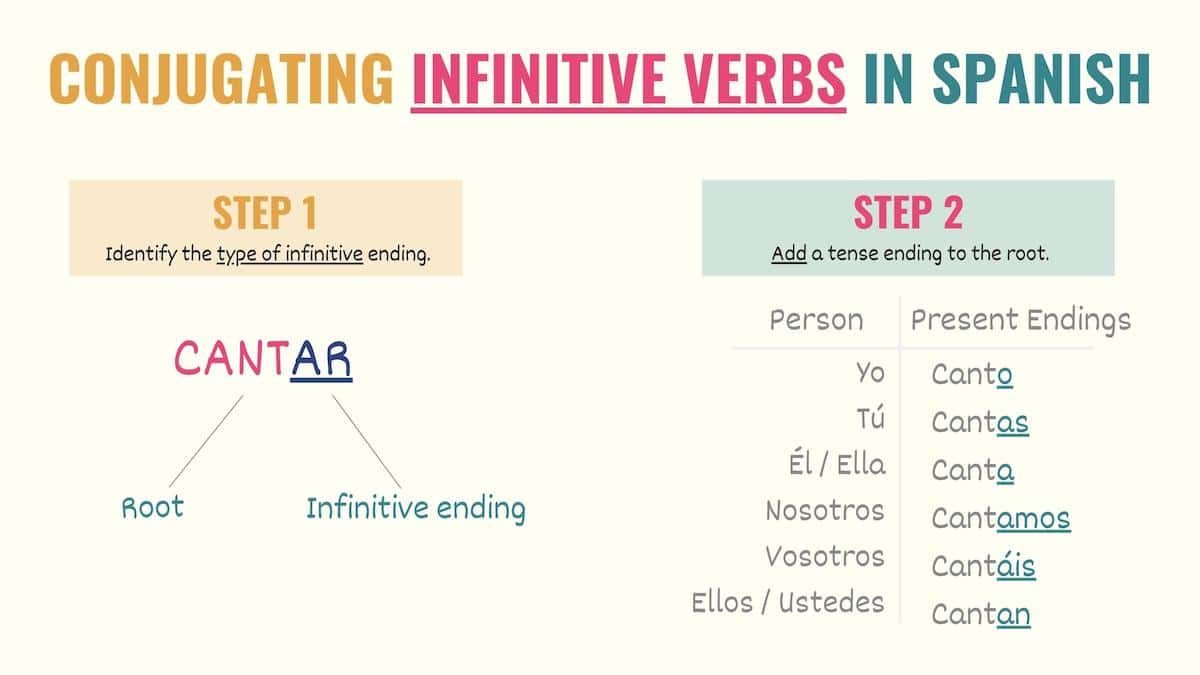
Infinitive Verbs in Spanish Verb Endings, Uses & Rules
Die Konstruktion ir a + Infinitiv ist eine spanische Verbalperiphrase (= gleich verbale Umschreibung), die mithilfe des Präsens etwas Zukünftiges ausdrückt. Ir a + Infinitiv wird in der gesprochenen Sprache oft anstelle des Futuro simple für Pläne und Ereignisse verwendet, welche die unmittelbare oder nahe Zukunft betreffen. Lerne hier die.
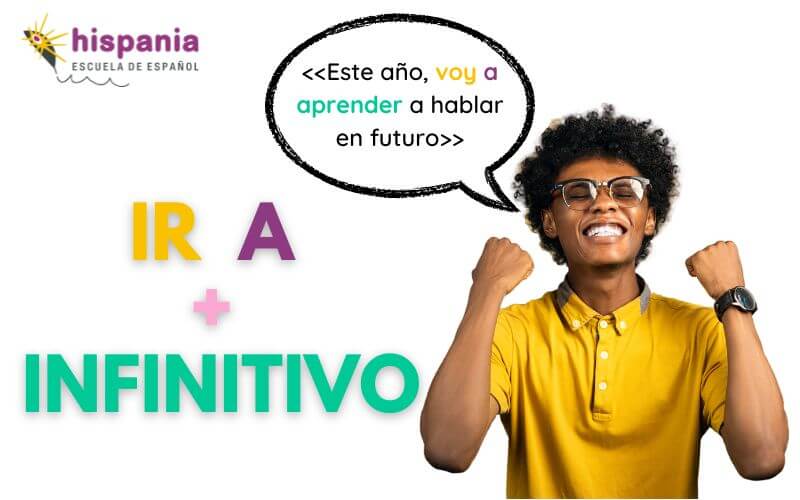
The future in Spanish Verbal periphrasis IR + A + INFINITIVE
In many cases, a sentence in Spanish near future may require an object or reflexive pronoun. These elements are added to the ir a infinitive formula. When doing so, you have two options: #1 Place them before the conjugated verb (ir) [Object or reflexive pronoun] + ['ir' conjugated] + a + [infinitive verb] Se va a bañar.

SPANISH FAKE FUTURE TENSE [IR + A + Infinitive (ar, er, ir) // Lesson 9 YouTube
Das spanische Futur. In diesem Kapitel werfen wir einen Blick in die Zukunft und lernen, wie man sie beschreibt. Im Spanischen wird dazu das Futur I ( el futuro simple ), das Futur II ( el futuro perfecto) und für die nahe Zukunft die Kombination aus ir a + Infinitiv benutzt.
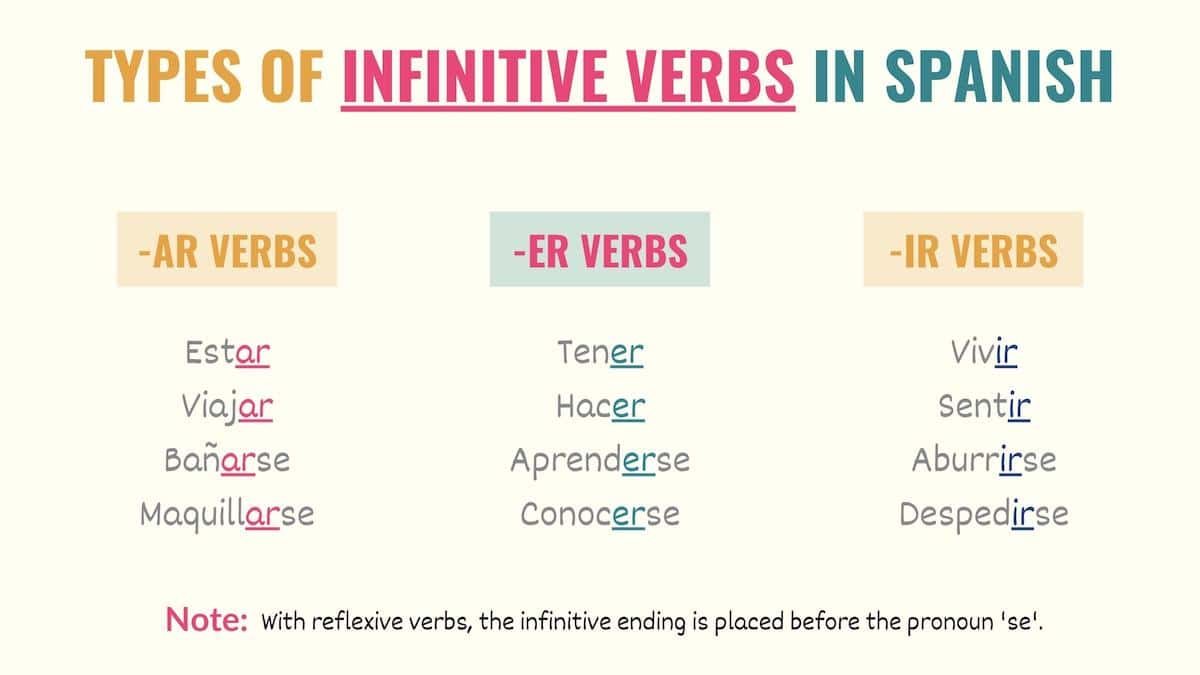
Infinitive Verbs in Spanish Verb Endings, Uses & Rules
In Spanish, one way to do this involves the verb ir, which as you already know, means "to go," and an infinitive. Literally, you are saying "I am going to.." When you use this structure, you are indicating that at some time in the future, be it later that same day or in a few months, you will do a certain activity.

SPANISCH IR + A + INFINITIV Futuro Próximo lernen A1 YouTube
Culture. Using the near future in Spanish: ir + a + infinitive. by Alison Maciejewski Cortez. Published on October 31, 2023 / Updated on January 3, 2024. Facebook. Post. Learn how the ir + a + infinitive structure is formed, why it's different from simple future tense and when to use it in conversation.

The Spanish Cheat Sheet Ir + A + Infinitive = Packing For The Future
Ir + a + infinitive is a simple Spanish formula for expressing the near future. In fact, a similar formula exists in English, where we swap for "going": Discussing your plans and intentions for the future are an important part of daily conversations and in Spanish, there are two ways to accomplish this: In this blog post, we are going to.

Making Future Plans in Spanish IR + A + Infinitive SpanishLearningLab
One way of referring to the future, in Spanish, is the construction formed by: the verb "IR" conjugated in the present tense (which tells us WHO performs the action) +. the preposition "A" +. the infinitive verb that will be the verb that expresses the real future action. Vamos a estudiar español - We are going to study spanish.

Futuro próximo o inmediato Spanish Quiz Quizizz
Gramática: Ir + a + infinitivo The verb ir is also used as a way to describe future plans when used in the following manner: ir + a + infinitive. It's important to remember that you only need to conjugate ir in this kind of sentence. Another way of looking at it is the rule that after a preposition (like a), a verb will always be in the infinitive.

Immediate future spanish YouTube
One such expression combines the verb ir (conjugated) with an infinitive. The preposition "a" is always used. The formula is: ir a + infinitive = to be going to do something (in the near future) Voy a llevar a mi hermana a su casa. I am going to take my sister to her house. Vas a invitar a muchas muchachas.
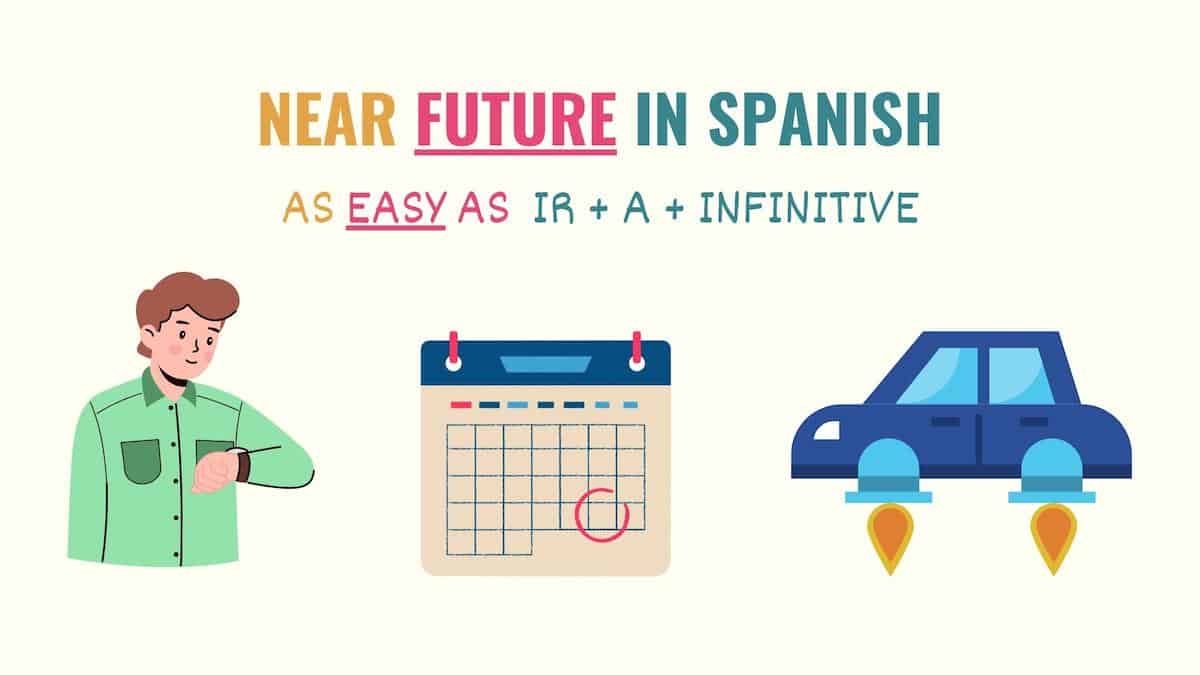
Near Future in Spanish As Easy as Ir + a + Infinitive
In this Spanish lesson we are going to see how to describe future plans in Spanish using el verbo "Ir" (the verb "To go") followed by "a" (to) and a verb in the infinitive. This Spanish future tense is very similar to the English future tense that uses "Going to…" followed by a verb in infinitive, also to describe future plans.

IR A INFINITIVE Cloze Activity for Spanish Class "Mi Viaje a ___" Cloze activity, How to
Explanation. Quick Answer. There are two ways to form the future tense in Spanish: the informal future ( ir + a + infinitive) and the simple future ( el futuro simple ). The simple future, unlike the informal future, is expressed in a single word. The Spanish simple future is used to talk about what will or shall happen.
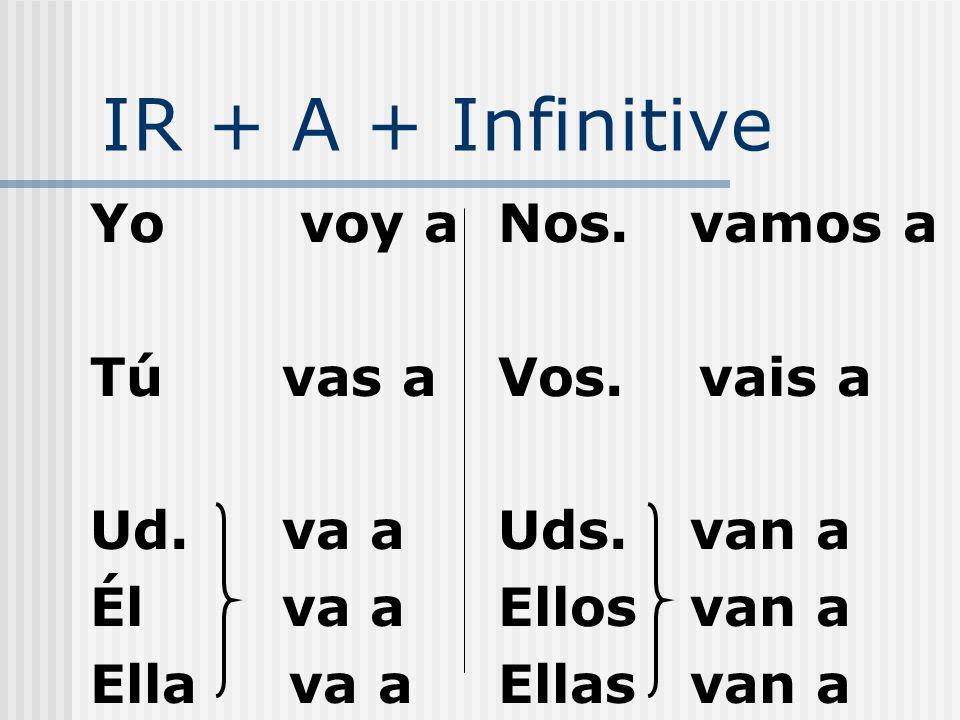
ir + a + (infinitive verb) 1.9K plays Quizizz
EL FUTURO PROXIMO (oder Popular) ist eins der wichtigsten Themen, wenn man Spanisch lernt, da man so über die Zukunft sprechen kann. In diesem Spanischunterr.

29. Spanisch lernen IR A + INFINITIVO + futuro próximo YouTube
Rule 3. The structure of near future in Spanish is very simple. To form it, you need the verb ir in the present tense, add the preposition a and a verb in the infinitive. Remember that verbs in the infinitive are those that are not yet conjugated. subject pronoun + ir in the present indicative + preposition a + verb in infinitive form.
- Molitva Sv Josipu Za Djecu
- Star Wars Legion Clone Wars
- فیلم سه هزار سال حسرت
- Ferienwohnung Mit Kamin Im Harz
- Zebo Der Dritte Aus Der Sternenmitte
- Sergei Sergejewitsch Prokofjew Peter Und Der Wolf Songtext
- Wenn Liebe So Einfach Wäre
- Wie Groß Ist Marc Eggers
- Hut Zur Hochzeit Als Gast
- Woran Kann Es Liegen Wenn Die Hupe